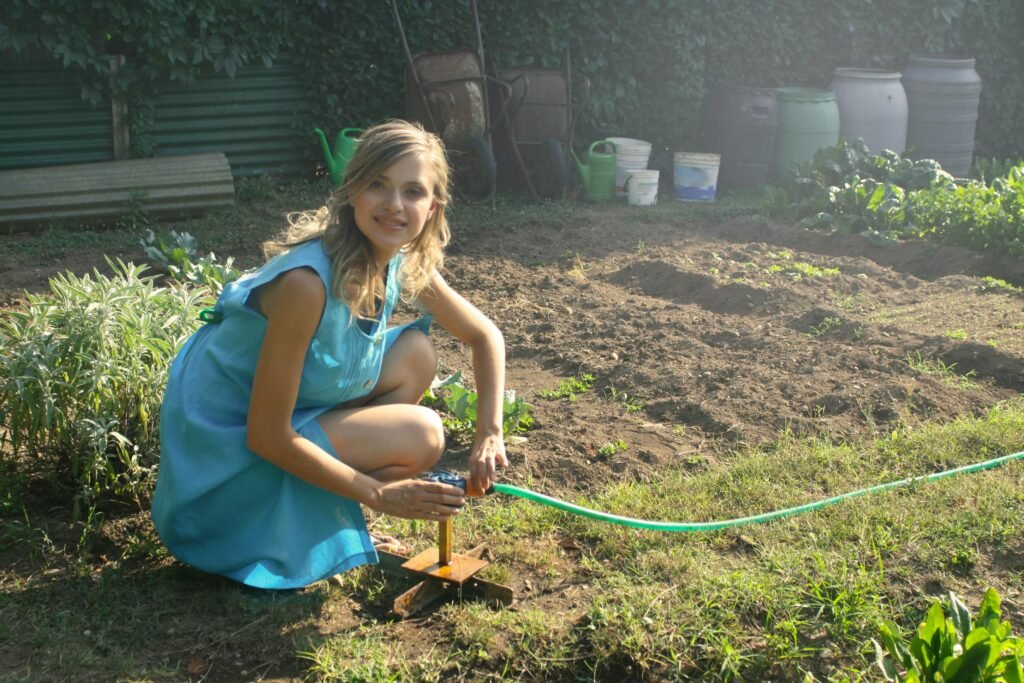Thinking about fresh, homegrown vegetables? 🥕🍅. Starting a vegetable garden in your backyard is easier than you would think! Whether you’re a newbie or have some gardening experience, I will teach you everything you need to know about growing your own vegetables. Let’s dig in! ⛏️

Why Start a Vegetable Garden?
Growing your own vegetables is not only rewarding but also:
- Saves money! 💰
- Provides fresh, organic products. 🥬
- Reduces your carbon footprint.🌍
- Improves mental and physical health. 🧘♂️
Step-by-Step Guide to start a Vegetable Garden
- 🌞 Choose the Right Location
- Sunlight: Pick a spot that gets at least 6-8 hours of sunlight daily.
- Drainage: Ensure the area has good drainage to prevent waterlogging.
- Accessibility: Choose a location close to your home for easy access.
- 🪓 Plan Your Garden Layout
- Size: Start small (e.g., 10×10 feet) if you’re a beginner.
- Shape: Consider raised beds, rows, or square-foot gardening.
- Companion Planting: Group plants that benefit each other (e.g., tomatoes 🍅 + basil 🌿).
- 🌱 Select the Right Vegetables
- Tomatoes 🍅
- Lettuce 🥬
- Carrots 🥕
- Zucchini 🥒
- Green Beans 🌱
- 🌿 Prepare the Soil
- Test the Soil: Check pH levels (most veggies prefer 6.0-7.0).
- Add Compost: Enrich the soil with organic compost or fertilizer.
- Loosen the Soil: Use a tiller or garden fork to aerate the soil.
- 🌧️ Plant Your Vegetables
- Follow Spacing Guidelines: Check seed packets or plant tags for proper spacing.
- Plant at the Right Depth: Generally, plant seeds 2-3 times their diameter deep.
- Water Thoroughly: Keep the soil moist but not waterlogged.
- 🛠️ Maintain Your Garden
- Watering: Water deeply 1-2 times a week, depending on rainfall.
- Weeding: Remove weeds regularly to reduce competition for nutrients.
- Mulching: Add mulch to preserve moisture and control weeds.
- Fertilizing: Use organic fertilizers to nourish your plants.
- 🐞 Pest & Disease Management
- Natural Remedies: Use neem oil, garlic spray, or diatomaceous earth.
- Companion Planting: Grow pest-repellent plants like marigolds 🌼.
- Regular Inspection: Check plants for signs of pests or diseases.
- 🌾 Harvest Your Vegetables
- Timing: Harvest when vegetables are ripe (check seed packets for guidance).
- Technique: Use clean, sharp tools to avoid damaging plants.
- Enjoy: Taste the fruits (and veggies) of your hard work! 🥗
Best Vegetables for Beginners
| Vegetable | Why It’s Great | Care Level |
|---|---|---|
| Tomatoes 🍅 | Versatile, high yield | Moderate |
| Lettuce 🥬 | Fast-growing, great for salads | Easy |
| Carrots 🥕 | Fun to grow, stores well | Easy |
| Zucchini 🥒 | Prolific producer, great for grilling | Easy |
| Green Beans 🌱 | Easy to grow, great for beginners | Very Easy |
Creative Garden Ideas
- Raised Beds: Perfect for better soil control and drainage.
- Vertical Gardening: Grow climbing plants like beans or cucumbers on trellises.
- Container Gardening: Use pots or containers for small spaces.
- Square-Foot Gardening: Maximize space by dividing your garden into squares.
- Themed Gardens: Create a salsa garden (tomatoes, peppers, cilantro) or pizza garden (tomatoes, basil, oregano).

Starting a vegetable garden in your backyard is an enjoyable and rewarding experience. 🌟. With proper planning, care, and patience, you will soon be able to enjoy fresh, homegrown vegetables. Grab your gardening tools, select your favorite vegetables, and start today! 🌱
Got more gardening questions or need fresh ideas? Stick around—Infocandle has got your back!
Trending Articles:
- How to Create a Beautiful Indoor Garden in Small Spaces
- 10 Easy-to-Grow Plants for Beginner Gardeners!
- Creating a Cozy Cottage Garden: Tips and Tricks


